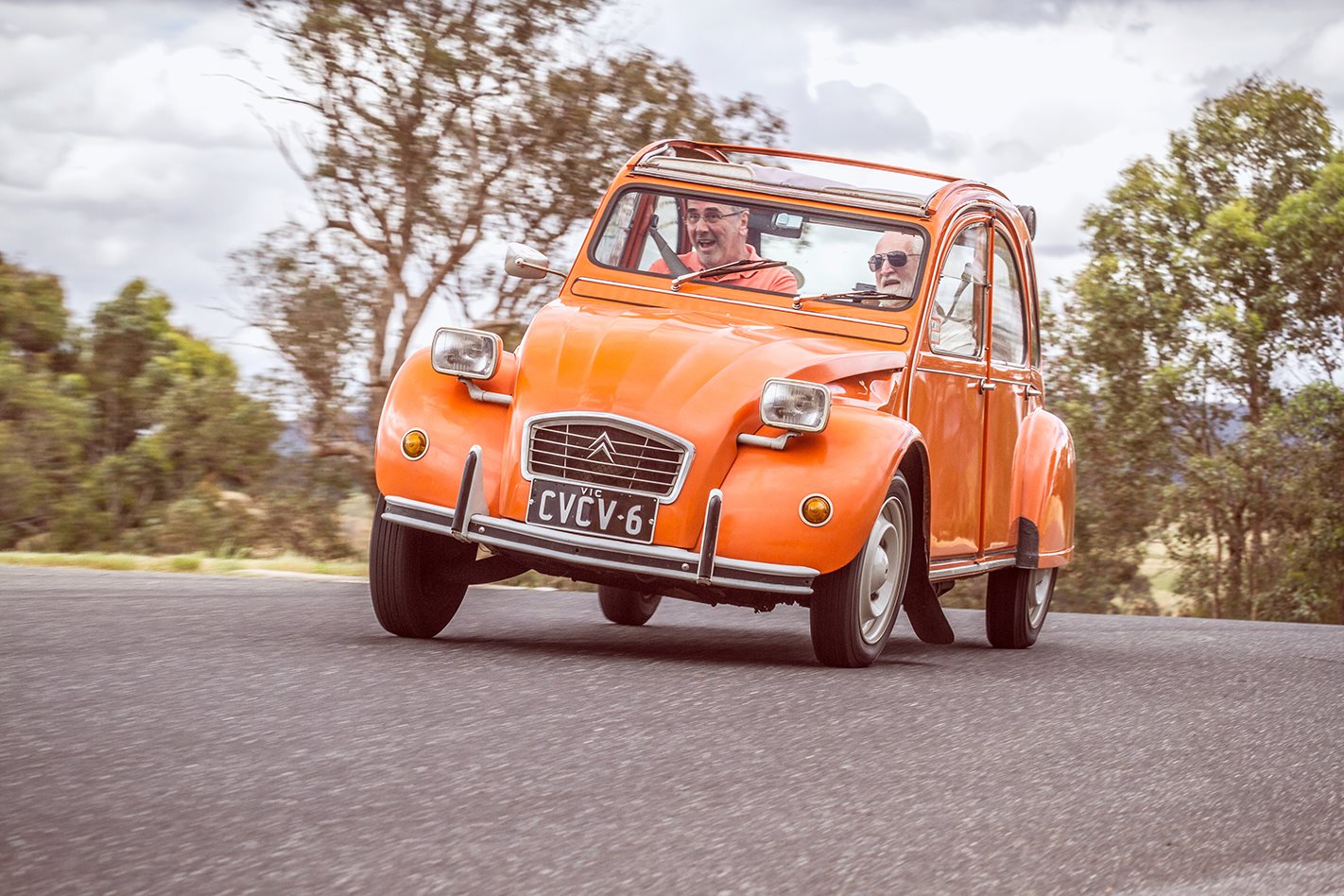RIGHT from the moment I first saw the Citroen 2CV, in imported British car magazines sometime in the mid-1970s, I wanted to drive it. To a teenager growing up in country NSW, it appeared alien, exotic and deeply, weirdly alluring. The fascination didn’t fade as I learned more about this car.
The story of the 2CV’s WWII-delayed development, with patriotic Frenchmen hiding prototypes from nefarious Nazis, had all the drama of a black and white movie about plucky Resistance fighters. But it was the car’s design, in the end, that fascinated me most. Not design in the sense of styling, because the 2CV wasn’t stylish, but in the sense of engineering.
Compared with the first cars I owned, which were mostly conventional, second-hand Australian metal, including an EH Holden and a series of XP Falcons, the 2CV was amazingly unorthodox.
It weighed next to nothing, had a tiny air-cooled two-cylinder engine, a mind-warping gearshift mechanism, and the strangest suspension system I’d ever heard of. Metal cylinders mounted horizontal and lengthways beneath each side of the car contained coil springs. Rods from the spring boxes sprouted fore and aft, to connect the front and rear wheels of each side. Those wheels were mounted on pivoting arms, leading at the front and trailing at the rear. Dampers were mounted horizontally, adjacent to the pull/push rods.
In my everyday world of live axles and leaf springs, this was crazy stuff.
But it gradually dawned on me that the 2CV was pure engineering brilliance. Citroen’s team had created a very useful car using the least amount of material possible. By this time I had become an admirer of Car magazine columnist Leonard John Kensell Setright. The scarily eccentric and formidably erudite LJK, who died in 2005, summed up the 2CV better than I’ll ever be able to. It was, he wrote, “the most intelligent application of minimalism ever to succeed as a car” and “remorselessly rational”. Precisely…
Though I once rode in a 2CV while living in London in 1982, the chance to drive one somehow never happened. Until now.
Don Scutt’s very original 2CV 6, with the big-bore 602cc engine, is, amazingly, the same colour as the one I rode in more than 30 years ago.
The Citroen sinks on its suspension as we climb aboard. It’s a trip a long way backwards through time. The flat windscreen is close, the tiny number of gauges and switches are arranged without any apparent thought for ergonomics.
The other thing that’s obviously missing is safety. The skinny steering wheel has no airbag and the steering column ignition switch seems perfectly placed to cause maximum damage to the right knee.
But the sheer joy of driving the 2CV obliterates any namby-pamby concerns from the 21st century. My first surprise is that’s it’s not as slow as I’d expected. The chuffing little flat-twin seems almost eager, in the lower gears at least. The gearshift is light and has good feel, and after a very short while the loony shift pattern makes perfect sense. The brakes, inboard drums at the front, are relatively feeble. The 2CV’s legendary roll angles are awesome through Broadford’s corners, but it feels supremely stable even when listing a long way to port or starboard.
But it’s the 2CV’s ride that is the most astonishing thing about it. The suspension weirdness works brilliantly, and on badly pockmarked Victorian country roads it feels more like a hovercraft than a wheeled vehicle. It’s vastly, supremely, incredibly superior to any modern light car in this respect.
So now I’m wasting hours on the web checking out 2CV specialists in Germany and the UK. Beginning with a brand-new chassis, these places can build you a better-than-original 2CV to order, for prices that aren’t insane. I’m tempted, sorely tempted…
Did you know?
- Counting sedans and vans, 2CV production between 1949 and 1990 totalled five million. As well as France, it was assembled in the UK, Belgium, Spain, Portugal, Yugoslavia, Argentina, Chile and Uruguay
- Most exotic 2CV spin-off is the Sahara; fewer than 1000 were produced from 1958-66. With two 425cc engines (one in the usual place, the second in the cargo area) it was a surprisingly capable little 4WD
- Shifting in the 2CV: From neutral, twist left and pull for first. Push, let it spring across neutral to the two-three plane, push again for second. Pull right back for third. Push, twist right from neutral, push again for fourth. Simple!
Living the dream
DON Scutt, semi-retired 75-year-old metallurgist whose career has encompassed air crash investigation, teaching materials science at Monash University in Melbourne and making training videos, bought his orange 2CV 6 new in the UK in 1976.
With Don, his wife, two daughters and camping gear aboard, it was used to tour Europe before being shipped back to Australia. It remains in regular use as a second car (the other one’s a Citroen, too; a 10-year-old C3). Having racked up more than 400,000 miles, Don thinks it might be time for the 2CV’s engine to be given a proper rebuild. It’s made it this far with only a new set of piston rings, he says.
Don likes the 2CV for exactly the reasons I find it such a fascinating car. “Its simplicity. Its uniqueness,” are the key characteristics at the core of his 39-year relationship with the car. A lifelong Citroen guy, alongside his current stable of 2CV and C3, Don has previously owned Light 15, ID, DS, GS and CX models. It’s the CX, though, not the 2CV, that is his all-time favourite.
Model: 1976 Citroen 2CV 6 Engine: 602cc flat-twin, ohv, 4v, air-cooled Max power: 21kW @ 5750rpm Max torque: 42Nm @ 3500rpm Transmission: 4-speed manual Kerb weight: 585kg 0-100km/h: 33.0sec Economy: 5.5L/100km Price when new: £1640
Sign up here to receive the latest round-up of Wheels news, reviews and video highlights straight to your inbox each week.






